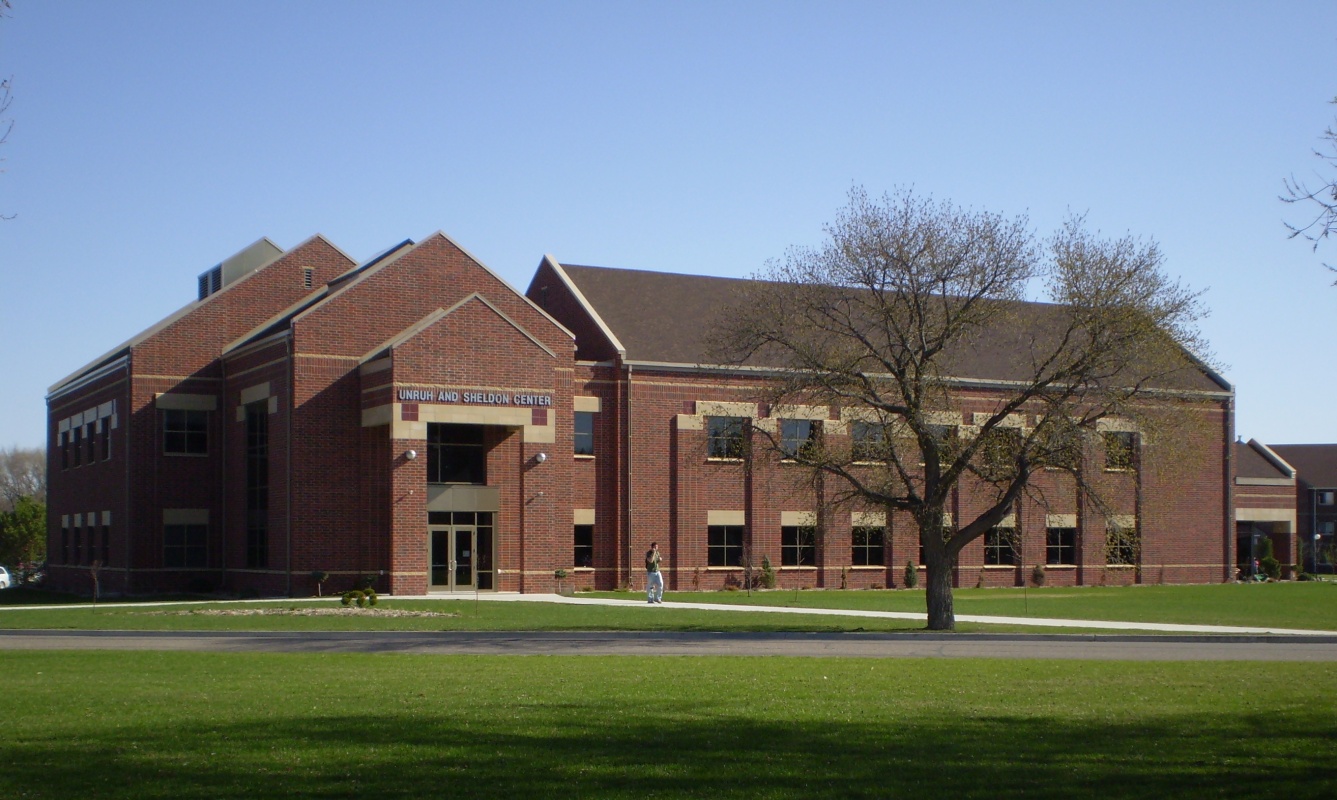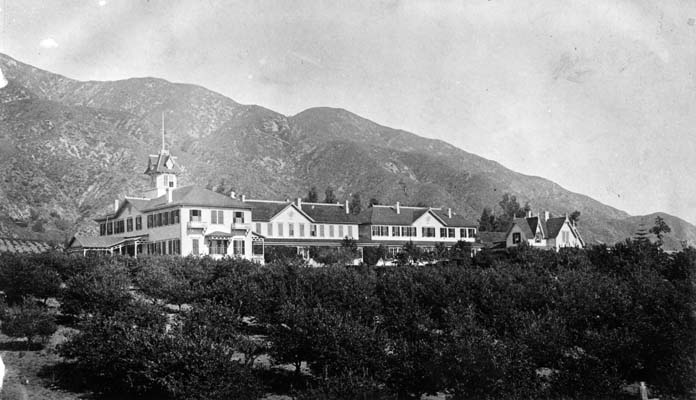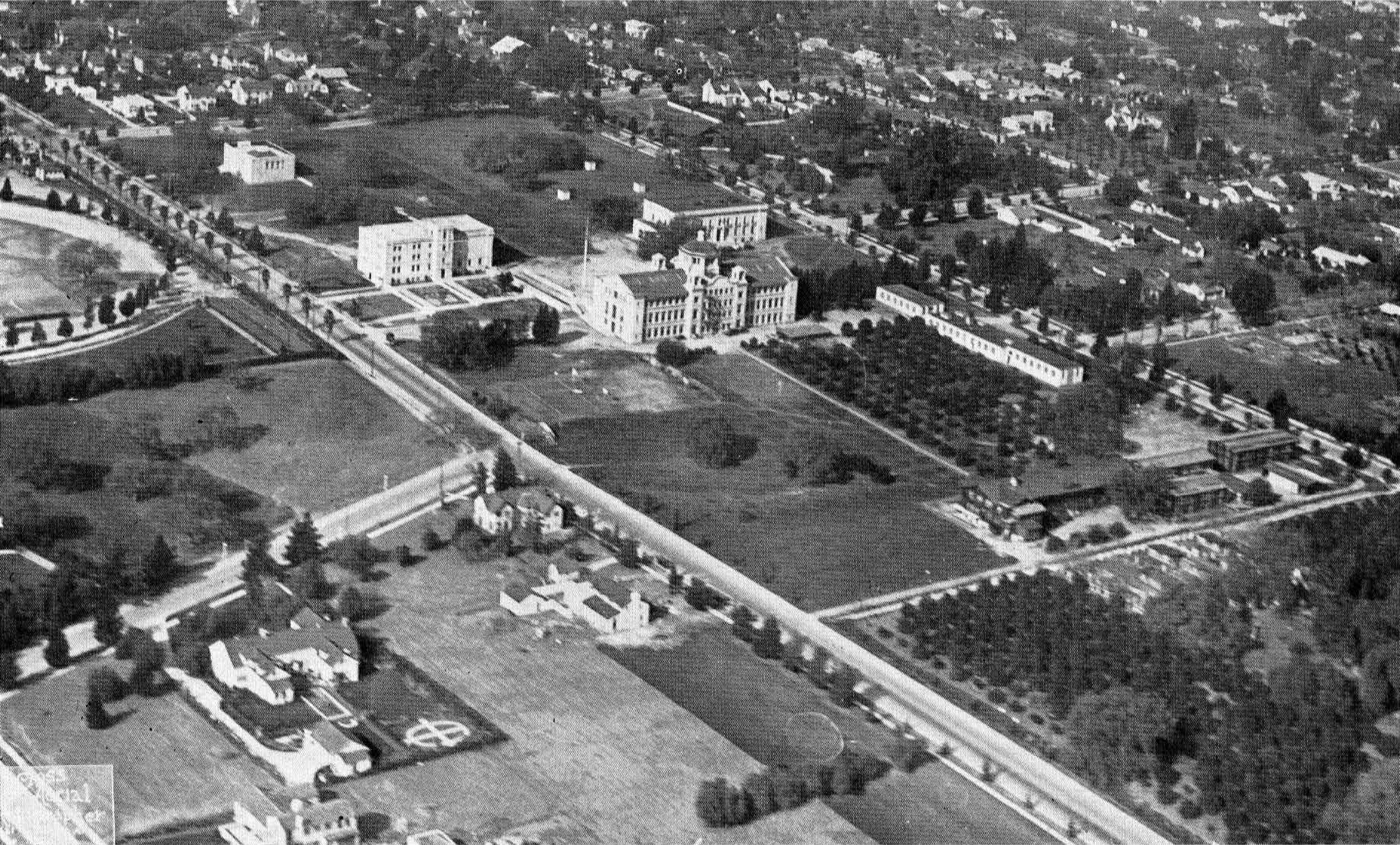|
Charles Camp
Charles Lewis Camp (March 12, 1893 – August 14, 1975) was an American palaeontologist and zoologist, working from the University of California, Berkeley. He took part in excavations at the 'Placerias Quarry', in 1930 and the forty ''Shonisaurus'' skeleton discoveries of the 1960s, in what is now the Berlin-Ichthyosaur State Park. Camp served as the third director of the University of California Museum of Paleontology from 1930 to 1949, and coincidentally as chair of the UC Berkeley Paleontology Department between 1939 and 1949. Camp named a number of species of marine reptiles such as ''Shonisaurus'' and ''Plotosaurus'', as well as the dinosaur ''Segisaurus''. Early life Charles Lewis Camp was born on March 12, 1893, in Jamestown, North Dakota. His father was a U.S. district attorney and amateur geologist. He was raised in Sierra Madre, California, where he met zoologist Joseph Grinnell, with whom he would study and travel with as a teenager. His later scientific interests wer ... [...More Info...] [...Related Items...] OR: [Wikipedia] [Google] [Baidu] |
Jamestown, North Dakota
Jamestown is a city in and the county seat of Stutsman County, North Dakota, United States. The population was 15,849 at the 2020 United States census, 2020 census, making it the List of cities in North Dakota, ninth most populous city in North Dakota. Jamestown was founded in 1883 and is home to the University of Jamestown. History In 1871, a Northern Pacific Railroad work crew set up camp where the railroad would cross the James River, adding another section to the new northern transcontinental line. In 1872, the United States Army established Fort Seward, a small post garrisoned by three companies (about 120 men) of the Twentieth Infantry Regiment, on a bluff overlooking the confluence of the James River (Dakotas), James River and Pipestem River, Pipestem Creek. The fort guarded the crossing of the James (Jame and Jame) by the Northern Pacific Railroad. The fort only lasted five years, being decommissioned in 1877—but the railroad remained, establishing a repair yard that wa ... [...More Info...] [...Related Items...] OR: [Wikipedia] [Google] [Baidu] |
Sierra Madre, California
Sierra Madre (Spanish language, Spanish for "mother range") is a city in Los Angeles County, California, with a population of 11,268 at the time of the 2020 U.S. Census. The city is in the foothills of the San Gabriel Valley below the southern edge of the Angeles National Forest. Pasadena, California, Pasadena and Altadena, California, Altadena are to its west, with Arcadia, California, Arcadia to its south and east. Sierra Madre is known as "Wisteria City", and its city seal is decorated with a drawing of the now widely known vine. It is also called the "Village of the Foothills" and was an All-America City Award, All-America City in 2007. History Early history In approximately 500 Common Era, CE, Tongva people, Tongva Indians, the native people migrated from the Mojave, California, Mojave area to what would become Los Angeles County (including the San Gabriel Valley). Their name means "People of the Earth". Their primary language was Uto-Aztecan Shoshonean. In the 16th centu ... [...More Info...] [...Related Items...] OR: [Wikipedia] [Google] [Baidu] |
Gladwyn Kingsley Noble
Gladwyn Kingsley Noble (September 20, 1894 – December 9, 1940) was an American zoologist who served as the head curator for the department of herpetology and the department of experimental biology at the American Museum of Natural History. Noble received bachelor's and master's degrees from Harvard University in 1917 and 1918, respectively, and a Ph.D. from Columbia University in 1922. He joined the herpetology department in 1922 as a research assistant and assistant curator in 1917, and became the chairman of the department in 1924. He later formed the Department of Experimental Biology in 1928, and served as the chairman of both departments until his death on December 9, 1940, from a streptococcal throat infection. Background Noble's father was Gilbert Clifford Noble, one of the founders of what would become Barnes & Noble bookstores and publishing house. Gilbert Clifford Noble joined the Arthur Hinds & Company firm in 1886 after graduating from Harvard College. In 1894, he wa ... [...More Info...] [...Related Items...] OR: [Wikipedia] [Google] [Baidu] |
American Expeditionary Forces
The American Expeditionary Forces (AEF) was a formation of the United States Armed Forces on the Western Front (World War I), Western Front during World War I, composed mostly of units from the United States Army, U.S. Army. The AEF was established on July 5, 1917, in Chaumont, Haute-Marne, Chaumont, France under the command of then-major general John J. Pershing. It fought alongside French Army, British Army, Canadian Army, British Indian Army, New Zealand Army and Australian Army units against the Imperial German Army. A small number of AEF troops also fought alongside Italian Army units in 1918 against the Austro-Hungarian Army. The AEF helped the French Army on the Western Front during the Third Battle of the Aisne, Aisne Offensive (at the Battle of Château-Thierry (1918), Battle of Château-Thierry and Battle of Belleau Wood) in the summer of 1918, and fought its major actions in the Battle of Saint-Mihiel and the Meuse-Argonne Offensive in the latter part of 1918. Formatio ... [...More Info...] [...Related Items...] OR: [Wikipedia] [Google] [Baidu] |
Plattsburgh, New York
Plattsburgh is a city in and the county seat of Clinton County, New York, United States, situated on the north-western shore of Lake Champlain. The population was 19,841 at the United States Census, 2020, 2020 census. The population of the surrounding (and separately incorporated) Plattsburgh (town), New York, Town of Plattsburgh was 11,886 as of the United States Census, 2020, 2020 census, making the combined population of Plattsburgh to be 31,727. Plattsburgh lies just to the northeast of Adirondack Park, immediately outside of the park boundaries. It is the second largest community in the North Country (New York), North Country region (after Watertown, New York, Watertown), and serves as the main commercial hub for the sparsely populated northern Adirondack Mountains. The land around Plattsburgh was previously inhabited by the Iroquois, Western Abenaki, Mohican, and Mohawk people. Samuel de Champlain was the first ever recorded European that sailed into Champlain Valley and ... [...More Info...] [...Related Items...] OR: [Wikipedia] [Google] [Baidu] |
Citizens' Military Training Camp
Citizens' Military Training Camps (CMTC) were United States government authorized military training programs held annually each summer during the years 1921 to 1940. CMTC camps differed from National Guard and Organized Reserve training in that the program allowed male citizens to obtain basic military training without an obligation to call-up for active duty. The CMTC were authorized by the National Defense Act of 1920 as a compromise that rejected universal military training. In its nearly two decades of operation, the CMTC trained some 400,000 men in at least one season from 1921 to 1940. Overall the program was disappointing, as only 5,000 officer commissions were awarded to men who completed the required four summers of training. Before the United States entered World War I, private citizens of the Preparedness Movement set up what were known as the "Plattsburg camps" to build a reserve of qualified men. These provided at least one summer of training in 1915 and 1916 to so ... [...More Info...] [...Related Items...] OR: [Wikipedia] [Google] [Baidu] |
World War I
World War I or the First World War (28 July 1914 – 11 November 1918), also known as the Great War, was a World war, global conflict between two coalitions: the Allies of World War I, Allies (or Entente) and the Central Powers. Fighting took place mainly in European theatre of World War I, Europe and the Middle Eastern theatre of World War I, Middle East, as well as in parts of African theatre of World War I, Africa and the Asian and Pacific theatre of World War I, Asia-Pacific, and in Europe was characterised by trench warfare; the widespread use of Artillery of World War I, artillery, machine guns, and Chemical weapons in World War I, chemical weapons (gas); and the introductions of Tanks in World War I, tanks and Aviation in World War I, aircraft. World War I was one of the List of wars by death toll, deadliest conflicts in history, resulting in an estimated World War I casualties, 10 million military dead and more than 20 million wounded, plus some 10 million civilian de ... [...More Info...] [...Related Items...] OR: [Wikipedia] [Google] [Baidu] |
Mary Cynthia Dickerson
Mary Cynthia Dickerson (March 7, 1866 – April 23, 1923) was an American herpetology, herpetologist and the first curator of herpetology at the American Museum of Natural History, as well as the first curator in the now defunct department of Woods and Forestry. For ten years she was the editor of ''The American Museum Journal'', which was renamed Natural History (magazine), ''Natural History'' during her editorship. She published two books: ''Moths and Butterflies'' (1901) and ''The Frog Book'' (1906) as well as numerous popular and scientific articles. She described over 20 species of reptiles and is commemorated in the scientific names of four lizards. Early life and career Mary Cynthia Dickerson was born in Hastings, Michigan, on March 7, 1866 to parents Wilbur and Melissa Dickerson. In her early life she cared for her three small brothers. In a memorial, Maud Slye wrote "She put herself through college at a time when it was not easy for a girl to do this." She attended the Un ... [...More Info...] [...Related Items...] OR: [Wikipedia] [Google] [Baidu] |
Herpetology
Herpetology (from Ancient Greek ἑρπετόν ''herpetón'', meaning "reptile" or "creeping animal") is a branch of zoology concerned with the study of amphibians (including frogs, salamanders, and caecilians (Gymnophiona)) and reptiles (including snakes, lizards, turtles, crocodilians, and tuataras). Birds, which are cladistically included within Reptilia, are traditionally excluded here; the separate scientific study of birds is the subject of ornithology. The precise definition of herpetology is the study of ectothermic (cold-blooded) tetrapods. This definition of "herps" (otherwise called "herptiles" or "herpetofauna") excludes fish; however, it is not uncommon for herpetological and ichthyological scientific societies to collaborate. For instance, groups such as the American Society of Ichthyologists and Herpetologists have co-published journals and hosted conferences to foster the exchange of ideas between the fields. Herpetological societies are formed to ... [...More Info...] [...Related Items...] OR: [Wikipedia] [Google] [Baidu] |
William King Gregory
William King Gregory (May 19, 1876 – December 29, 1970) was an American zoologist, primatologist, paleontologist, and functional and comparative anatomist. He was an expert on mammalian dentition, and a contributor to theories of evolution. He presented his ideas to students and the general public through books and museum exhibits. Early life He was born in Greenwich Village, New York, on May 19, 1876 to George Gregory and Jane King Gregory. He attended Trinity School and then moved onto Columbia University in 1895, initially at the School of Mines but then transferring to Columbia College. He majored in zoology and vertebrate paleontology under Henry Fairfield Osborn. While still an undergraduate he became Osborn's research assistant and soon after married Laura Grace Foote. He received his undergraduate degree from Columbia in 1900, followed by a masters in 1905, and a doctorate in 1910. Academic career He developed an early interest in both fishes and the land vertebrates ... [...More Info...] [...Related Items...] OR: [Wikipedia] [Google] [Baidu] |
California Institute Of Technology
The California Institute of Technology (branded as Caltech) is a private research university in Pasadena, California, United States. The university is responsible for many modern scientific advancements and is among a small group of institutes of technology in the United States that are devoted to the instruction of pure and applied sciences. The institution was founded as a preparatory and vocational school by Amos G. Throop in 1891 and began attracting influential scientists such as George Ellery Hale, Arthur Amos Noyes, and Robert Andrews Millikan in the early 20th century. The vocational and preparatory schools were disbanded and spun off in 1910, and the college assumed its present name in 1920. In 1934, Caltech was elected to the Association of American Universities, and the antecedents of NASA's Jet Propulsion Laboratory, which Caltech continues to manage and operate, were established between 1936 and 1943 under Theodore von Kármán. Caltech has six academic divisi ... [...More Info...] [...Related Items...] OR: [Wikipedia] [Google] [Baidu] |
Pasadena High School (California)
Pasadena High School (PHS) is a public high school in Pasadena, California. It is one of four high schools in the Pasadena Unified School District. History The school was first established as a district school in 1884 and became Pasadena High School in 1891. In 1928, the school merged into Pasadena City College, Pasadena Junior College and operated as a four-year school, grades 11, 12, 13 and 14. Pasadena realigned its 6-4-4 school system in 1954 with Pasadena High School regaining its separate identity. PHS, however, shared the Pasadena City College Colorado Boulevard campus through the graduating class of 1960 when PHS moved to its present campus on Sierra Madre Boulevard at Washington Boulevard. The Rose Parade, post parade Rose Parade floats#Post-parade: A Showcase of Floats, Showcase of Floats takes place in front of the high school utilizing some of the school grounds and parking lots. Pasadena High School's athletic field was renovated, adding light towers, a new track ... [...More Info...] [...Related Items...] OR: [Wikipedia] [Google] [Baidu] |




